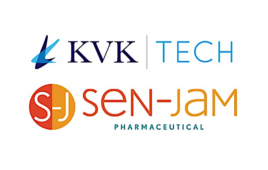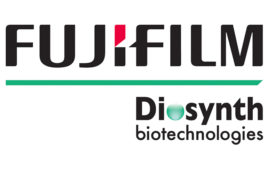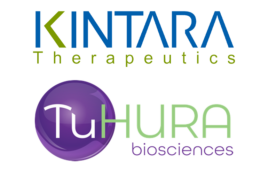Background
To meet emerging challenges, the pharmaceutical industry is currently in the midst of reinventing itself. These challenges include continually increasing drug development costs, slowing new product approval, blockbuster drug patent expirations, price pressure and global competition. Concurrently, significant opportunities exist for the pharmaceutical industry, including an increasing patient population, numerous unmet medical needs, growing disease awareness, globalization of operations and markets, and advances in efficiency.
The focus on drug development costs is driving the industry to consider outsourcing, relocating production and sourcing ingredients from lower-cost locations. These options are continually being explored to meet the challenge of utilizing a more robust, streamlined and efficient manufacturing process, and to secure a supply chain. To overcome the challenges of price pressure due to “generitization” of branded drugs, as well as severe global competition, even in the generic sector, many pharmaceutical companies are seeking new proprietary drug delivery formulations. Even companies that specifically make generics are developing alternative, patentable formulations.
Innovative, new excipients offered by various excipient suppliers enable the development of new dosage forms, improve efficiency and may reduce the cost of drugs. Excipients can add functionality to pharmaceutical products. They offer opportunities to introduce new dosage forms, and thus facilitate the extension of patent life. According to market research firm Frost & Sullivan, pharmaceutical companies are recognizing the value of excipients more than ever, particularly when it comes to drug efficacy, safety, stability and storage1. The major classes of solid dosage forms include Immediate Release (IR), Orally Disintegrating Tablets (ODT) and Controlled Release Tablets (CRT). The excipients, along with their manufacturing processes, play a critical role in making desired tablets.
To expedite drug product development, formulators frequently select wet granulation as their manufacturing process. Wet granulation is a process that is less dependent on excipient performance attributes. However, it involves multiple manufacturing steps, which can add time and cost to the development process. Conversely, Direct Compression (DC) is becoming a preferred manufacturing process as the continually modernizing pharmaceutical industry strives to improve its manufacturing cost and productivity. DC requires the selection of excipients with the physical characteristics that increase flowability and compressibility of the tableting blend. Utilizing high-speed tableting machines, DC enables the rapid production of high-quality tablets. Along with the Active Pharmaceutical Ingredient (API), the tableting blend also frequently contains a filler, binder, disintegrant, auxiliary excipients (glidants, solubilizers etc.) and a lubricant. The physical properties of these powder mixtures are often hard to predict. Problems can appear due to differences in particle size distribution of various components, uniformity of blending and segregation issues, among others. Tableting parameters, such as equipment geometry and energy input, can add to the complexity of the process when working with multi-particulate powder systems.2 Modern excipients are engineered to possess the properties of key components of the tableting blend in a single, highly flowable and compressible granular material. This material can provide a means to achieve a DC blend consisting of the API, the “engineered” excipient and the lubricant, which can be successfully used in a high-speed tableting machine.
Recent development in the excipient field, particularly in the area of performance excipients for DC, with applications in IR, ODT and CRT, are reviewed in this article.
The Latest Developments in the Excipients Marketplace
As the pharmaceutical industry strives to improve manufacturing processes, reduce costs and differentiate drug products, excipient suppliers are encouraged to provide novel excipients. Table 1 lists examples of novel excipients developed for immediate release, orally disintegrating and controlled release tablets, respectively.
A survey conducted by Shangraw and Demarest3,4 within the pharmaceutical industry ranked Microcrystalline Cellulose (MCC) as the most useful filler/binder for direct compression. MCC also has some disintegrant and anti-adherent properties.5 MCC has grown in popularity due to its excellent compactibility at low pressures and high-dilution potential. Presently available, there are already many MCC-based, co-processed excipients. These co-processed excipients improve functional properties such as the compressibility and flowability of MCC. Others improve functionality as a result of the incorporation of silica into the MCC matrix.
Mallinckrodt Baker has recently launched a novel performance excipient product — PanExceaTM MHC300G — based on particle engineering technology.6 This performance excipient is a composite particle of Microcrystalline Cellulose (MCC; filler), Hydroxypropyl Methylcellulose (HPMC; binder) and Crospovidone (CPVD; disintegrant).5 PanExcea MHC300G is specifically developed for immediate release tableting by direct compression in high-speed tableting machines. It is engineered to provide unique spherical particle morphology, porosity and surface activity for significantly improved flowability, compressibility, API mixing capabilities and consistent disintegration. The performance excipient allows for immediate release tablet production simply using the API and this excipient in combination, or by dilution with other auxiliary excipients. Another type of direct compression excipient currently on the market consists of lactose monohydrate, poly (vinylpyrrolidone) and crospovindone.
A series of new performance excipients were specifically designed for use in oral disintegrant tablet formulations. These excipients contribute to the manufacture and function of cost-effective, orally disintegrating drug products by DC as compared to specialized technologies such as freeze drying or tablet molding. ODT performance excipients offer properties that are not achieved from simply blending the individual ingredients. They impart sufficient hardness to tablets with low friability and demonstrate buccal disintegration times within 30 seconds, without water. Mallinckrodt Baker’s PanExcea ODT performance excipient enables good taste and texture, along with fast dispersibility as a result of its particle engineering technology.8
Simultaneously, manufacturers are also targeting excipients to improve the performance of controlled-release formulations, enable faster development and easy manufacturing. Though many controlled release technologies have emerged, few co-processed excipients exist that can be used for direct compression of extended release tablets. For example, Dow Wolff Cellulosics recently introduced two new hypromellose products for direct compression of controlled-release matrix oral dosage forms.9
Increasing numbers of drug candidates are not water soluble and therefore require specialized formulations in order to fulfill their potential. Biological drugs, such as peptides, proteins and monoclonal antibodies are posing significant challenges for oral formulations. Poor membrane permeability, enzymatic instability, large molecular size and hydrophilic properties are all factors that have provided major hurdles for peptide and protein formulations.10 However, these challenges present opportunities for the development of new and novel excipients. These development activities require collaborative efforts by excipient manufacturers and the pharmaceutical industry to overcome development costs and regulatory hurdles .11
Role of Excipients in Quality by Design
The systematic drug product development approach, known as Quality by Design (QbD), is at the heart of the U.S. Food and Drug Administration’s (FDA) expectations for new pharmaceutical development applications.12 QbD involves the following key elements:17
* Target the product profile.
* Determine critical quality attributes (CQAs).
* Link raw material attributes and process parameters to CQAs and perform risk assessment.
* Develop a design space.
* Design and implement a control strategy.
* Manage product life cycle, including continual improvement.
CQAs are the characteristics of the final product that should remain within certain limits in order for Quality Assurance to approve the release of the product. Linking raw material attributes to CQAs is a valuable science-based process that can aid in identifying which material attributes and process parameters critically affect product CQAs. This linkage forms the basis for defining design space. The excipients, having defined physical characteristics and functionalities, can help implement QbD principles by simplifying the dimensions of the design space. Similarly, new excipients can be developed utilizing QbD principles, thereby linking product physical or chemical characteristics to the performance attributes. As such, novel excipients designed to offer consistent desired performance and quality could further ease implementation of QbD for drug products providing benefits to pharmaceutical industry and patients.
Selection and Qualification of Novel Excipients and Excipient Suppliers
Novel excipients are used in formulations due to their unique properties. As shown in Table 1, novel excipients are developed through a unique combination process of commonly known excipients. Under this new combination, the excipients provide different physical properties that deliver desired functionalities such as powder flow, compressibility, API blendability and tablet disintegration. This route enables ease of regulatory approval and lower development costs, while ensuring faster time to market, when compared to developing chemically new excipients.
As the role of excipients is to improve the stability of the finished drug product, it is vital to ensure the excipient is not a potential source of impurities, such as degradation products, heavy metals, microbiological contaminants, process related impurities and residual solvents. As such, the excipient should be well characterized and manufactured under appropriate regulatory framework and guidelines. Although there are no specific globally consistent Good Manufacturing Practice (GMP) regulations for excipients, they must be manufactured utilizing GMP principles. Due to change in the global environment and focus on excipients, various regulatory guidelines and proposals have emerged. The International Pharmaceutical Excipient Council (IPEC) has published GMP guidelines for excipients. Excipient manufacturers should follow these guidelines and have effective quality systems and process controls to provide consistent, quality products. In addition, supplier audits should be an overall part of excipient supplier qualification. IPEC has published excipient qualification guidelines for use in pharmaceuticals.
Since most novel excipients may be proprietary in nature, the excipient supplier qualification should also include an evaluation of supply chain risk/safety and contingency plans, as well as supply and quality agreements. In addition, the excipient supplier must be able to provide regulatory support beyond the drug master file, which enables seamless incorporation and approval of drug products by appropriate authorities, such as the US FDA.
About the Authors: Nandu Deorkar, Ph.D, corresponding author, is the director of Research and Development at Mallinckrodt Baker, Inc. (MBI), in Phillipsburg, NJ. He has more than 10 years of industrial product and process development experience and has authored numerous scientific publications and patents. He is a member of the American Association of Pharmaceutical Scientists and American Chemical Society. Liliana Miines, Ph. D. is the Senior Research Scientist at MBI. She has more than 10 years of academic and industrial research experience and has authored several publications. Jim Farina, Ph.D. is a Group Leader at MBI and has over twenty years of industrial research experience. Madhu Kallam is Application Engineer, Excipients at MBI and holds MS in chemical engineering and has more than three years of pharmaceutical research and manufacturing experience.
References:
1. Frost & Sullivan “Strategic Analysis of Pharmaceutical Excipients in Europe”; http://www.marketresearch.com/product/display.asp?productid=1117743 2. Hlinak, A. J.; Kuriyan, K.; Morris, K. R.; Reklaitis, G. V.; Basu, K. P. “Understanding Cristical material Properties for Soid Dosage Form Design” Journal of Pharmaceutical Innovation vol. 1, 12 – 17, 2006. 3. Shangraw, R. F.; Demarest, D. A. “Survey of Current Practices in the Formulation and Manufacture of Tablets and Capsules” Pharm. Technol., 17, 32-44, 1993.Journal of Pharmaceutical Innovation, Sept/Oct 2006, 12 4. Gohel, M. C.; Jogani, P. D. “A review of co-processed directly compressible excipients” J. Pharm. Pharmaceut. Sci. 8(1), 76-93, 2005. 5. “Handbook of Pharmaceutical Excipients” (and references therein) Fifth Edition; Editors Rowe, R. C.; Sheskey, P. J.; Owen, S. C, Pharmaceutical Press, London and the American Pharmaceutical Association, USA, 2006;. 6. J.T.Baker PanExcea high-performance excipients, MHC300G Product Profile, www.mallbaker.com. 7. J.T.Baker PanExcea high-performance excipients, MC200G Product Profile, www.mallbaker.com. 8. Arnum, P. V. “Measuring Excipient-Market Growth” PharmTech.com, April 2, 2008 and references therein http://pharmtech.findpharma.com/pharmtech/Ingredients+Insider/Measuring-Excipient-Market-Growth/ArticleStandard/Article/detail/505378 9. Dubin, C. H. “Overcoming Formulation Challenges of Proteins and Peptides” Drug Delivery Technology 7, 18-21, 2007. 10. Deorkar, N. “High-Functionality Excipients: A review” Tablet & Capsules, July 2008 11. “Innovation and Continuous Improvement in Pharmaceutical Manufacturing. Pharmaceutical CGMPs for the 21st Century” www.fda.gov/Cder/gmp/gmp2004/manufSciWP.pdf 12. ICH-Q8 (R1); For regulatory guide see also 21 CFR Part 211 Subparts B, E, H; ICH- Q7A, Q9 and Q10; 21 CFR Part 820.50. J.T.Baker® and PanExcea™ are trademarks of Mallinckrodt Baker, Inc. Avicel® is a trademark of FMC Corporation Captisol® is a trademark of CyDex Pharmaceuticals, Inc. Cellactose®, MicroceLac®, and StarLac® are trademarks of Meggle AG Celous® is a trademark of Asahi Kasel America, Inc. Compressol® and Pharmaburst® are trademarks of SPI Pharma, Inc. Eudragit® is a trademark of Roehm GmbH F-Melt® is a trademark of Fuji Chemical Industry Co., Ltd. Kollicoat®, Kollidon®, Ludiflash®, and Ludipress® are trademarks of BASF KLEPROSE® is a trademark of Roquette Pharma, France Pharmatose® is a trademark of DMV Fonterra Excipients GmbH & Co KG Plasdone® is a trademark of International Specialty Products (ISP) Prosolv is a trademark of J. Rettenmaier & Sohne GmbH & Co. KG Ran Explo™ is a trademark of RanQ StarCap® is a trademark of BPSI Holdings, Inc. TIMERx® is a trademark of Penwest Pharmaceuticals Co. Xylitab® is a trademark of Danisco Sweeteners Oy





